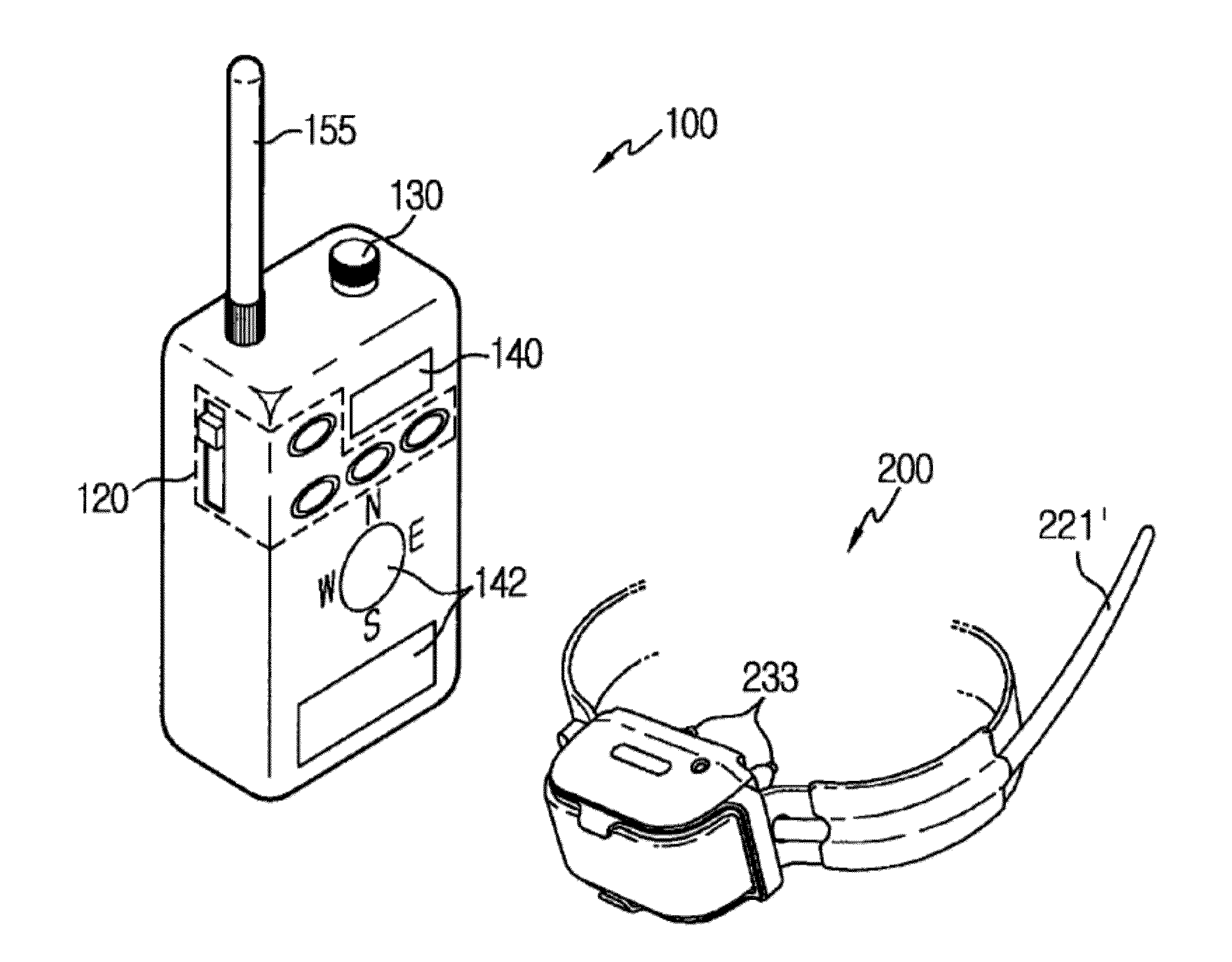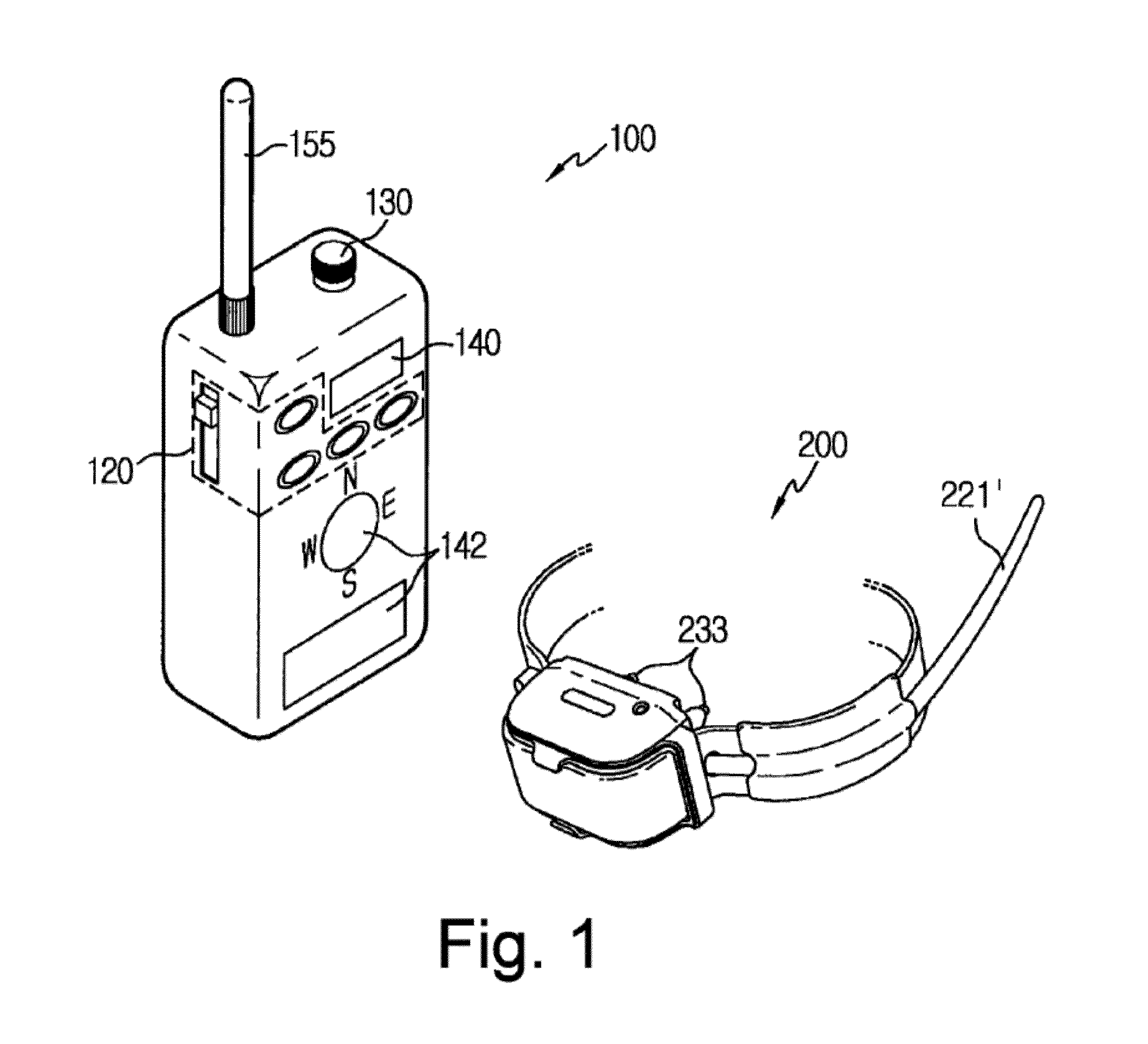Remote animal training system using voltage-to-frequency conversion
a technology of voltage-to-frequency conversion and remote training, which is applied in the field of remote training devices for animals, can solve the problems of insufficient selection of selector dials with many levels, and one level is not always the appropriate level
- Summary
- Abstract
- Description
- Claims
- Application Information
AI Technical Summary
Benefits of technology
Problems solved by technology
Method used
Image
Examples
third embodiment
[0126]Hereinafter, the present invention will be described with reference to FIGS. 6 and 7, based on only the components of the training device (receiver) 200, different from those of the former embodiments. In FIG. 6, the component designated by the same reference symbol as in FIGS. 3 and 5 is identical to that of the former embodiment. Meanwhile, only the input and output pins of the microprocessor 210 associated with the digital volume 330 are shown in FIG. 7, and the input and output pins not associated with the digital volume 330 are not shown therein.
[0127]330: Digital volume
[0128]
[0129]VCC—Power pin
[0130]A power is applied from the battery 262 to the power pin VCC, and the power pin VCC supplies the power to a circuit in the digital volume.
[0131]GND: Ground pin
[0132]DA: Data pin
[0133]The data pin DA exchanges commands and data (including stimulation level data) with the microprocessor 210 in a serial communication. The commands and data input to or output from the data pin DA...
fourth embodiment
[0151]Meanwhile, the animal training system of the present invention may also be configured to train two or more animals simultaneously by using a single remote controller. In other words, the animal training system may include a single remote controller, and two or more training devices capable of communicating with the single remote controller by RF communication, each respectively worn by the animals to be trained. The fourth embodiment is directed to such a system including a single remote controller and a plurality of training devices.
[0152]Hereinafter, the fourth embodiment of the present invention will be described in detail with reference to FIGS. 8 to 10, based on points that are different from the former embodiments. In FIGS. 8 to 10, the component designated by the same reference symbol as in FIGS. 1 and 2 is identical to that of the former embodiment.
[0153]The animal training system of the fourth embodiment includes a single remote controller 100′ and two training device...
fifth embodiment
[0167]Meanwhile, in the embodiments described above, by pressing the +20 level boost continuous stimulation button (third function button) 123, the electric impulse stimulation applied to the animal to be trained may be boosted by 20 levels during the time when the +20 level boost continuous stimulation button (third function button) 123 is pressed (for example, 5 to 7 seconds) so that low-frequency electric impulse stimulation at 20 levels higher than the present level is applied. This boost stimulation mode may be effectively used when the animal to be trained repeats behaviors which should be corrected. However, the levels (+20 levels) increased in the boost stimulation mode may be inappropriate depending on the sensitiviy of the animal to be trained. Therefore, in the present invention, the number of levels increasing in the boost stimulation mode (or, a level increment) may be set by the user as desired.
[0168]For this, the remote controller of this embodiment further includes a...
PUM
 Login to View More
Login to View More Abstract
Description
Claims
Application Information
 Login to View More
Login to View More - R&D
- Intellectual Property
- Life Sciences
- Materials
- Tech Scout
- Unparalleled Data Quality
- Higher Quality Content
- 60% Fewer Hallucinations
Browse by: Latest US Patents, China's latest patents, Technical Efficacy Thesaurus, Application Domain, Technology Topic, Popular Technical Reports.
© 2025 PatSnap. All rights reserved.Legal|Privacy policy|Modern Slavery Act Transparency Statement|Sitemap|About US| Contact US: help@patsnap.com



